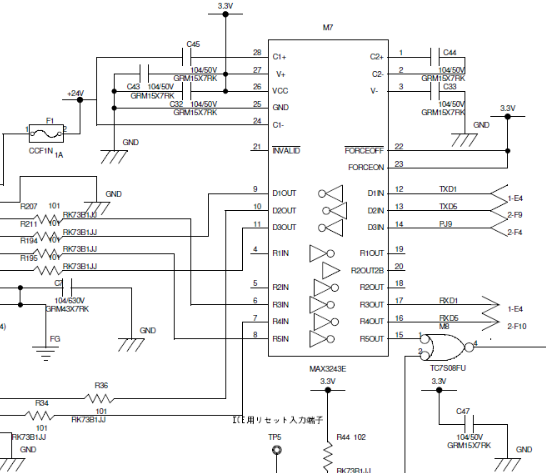Tool/software:
Hi,
I would like to consult about a circuit using the MAX3243ECDBR.
We implemented the attached circuit and observed the following issues:
-
Even when applying a valid TTL signal to pin 13 (T2IN), no RS-232 level signal was observed at pin 10 (T2OUT).
-
When we tested with 3.3V connected to the V+ pin, the IC was damaged.
According to the datasheet (MAX3243E recommended circuit), I understand that V+ and V– are generated internally by the charge pump and should not be externally powered. However, in our circuit it seems we mistakenly connected 3.3V to V+.
Could you please confirm the following points?
-
Is it correct that applying an external supply to V+ is likely to cause device failure?
-
Should the capacitors for C1+/C1– and C2+/C2– be placed directly between the respective pins, and not to ground?
-
Are there any cases where alternative connections (different from the datasheet’s recommended circuit) are acceptable for proper operation?
We would appreciate your confirmation.
Best regards,
Conor


